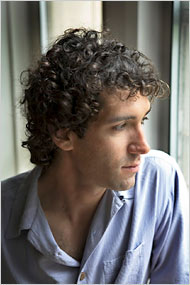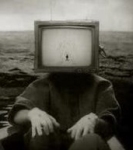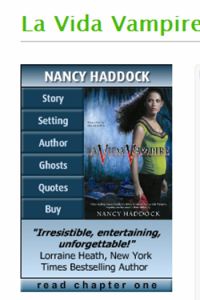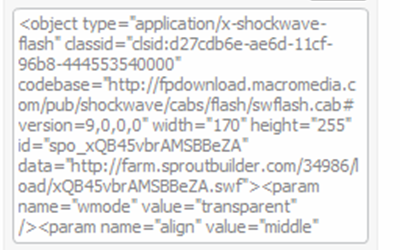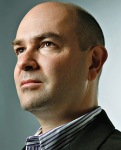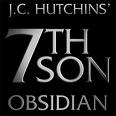
Mark Jeffrey
Most of us have enough on our hands just keeping up with our day jobs. But Mark Jeffrey, author of the ultra popular Max Quick series of books and podcast audiobooks has two day jobs. His first podiobook, Max Quick 1: The Pocket and the Pendant, has received over 2 million downloads to date. And he is currently CTO of Mahalo.com, a human-powered search service. Previously, Mark co-founded ZeroDegrees, a business social network (sold to IAC/InterActiveCorp in 2004). He was CEO and co-founder of SuperSig in 1999. Mark also co-founded The Palace, Inc., an early (1995) avatar chat platform backed by Intel, Time Warner and Softbank with 10 million users (sold to Communities.com in 1998). Mark lives in Santa Monica, California.
We recently interviewed Mark about his work, as well his thoughts about writing and the future of publishing.
FPP: How did you come to write the Max Quick series and why did you choose to pursue the young adult audience?
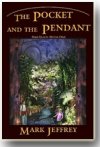
The Pocket & the Pendant
MJ: Initially, it was because it was something I thought I could do, that it was within my abilities as a first-time writer. I thought I would start with a ‘toy world’ and graduate from there to more serious stuff. But I quickly realized that I had actually, unwittingly, begun writing in one of the most serious of worlds possible. Paradoxically, it’s adult fiction that is usually rather trivial. Think about it. Who’s zooming who, who killed who — it’s all the same stuff, over and over. But Young Adult (YA) deals with large, archetypical themes. We are dealing with stories from the collective unconscious. That’s explosive. That’s handling nitro, baby.
Carl Jung once said, “One of the most difficult tasks men can perform, however much others may despise it, is the invention of good games and it cannot be done by men out of touch with their instinctive selves.” I think the same can be said of good YA fiction (though I don’t think it’s as much despised these days 🙂 )
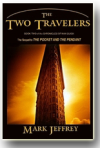
The Two Travelers
I think Harry Potter and His Dark Materials opened some eyes to the fact that this sort of thing could be successful in recent years. Of course, there have been countless similar examples over the last century: Star Wars, the Oz books (easily the ‘Potter’ of the turn of the century), Narnia and Lord of the Rings are all supposedly ‘young adult’ content. In fact, I find the stuff I like best tends to fall into this category.
One other bit of ‘young adult’ content I would highlight includes ‘Ender’s Game’ by Orson Scott Card. I had not read it before I wrote ‘Pocket’. But a lot people told me ‘Pocket’ reminded them a lot of ‘Ender’s Game’ in that the children have to grow up very fast, and they’re kind of on their own. The children are not there to be cute. Nor are they sort of half-people. Rather, they are narratively full, rich individuals and are taken very, very seriously as people. Same thing with ‘Stand By Me’, actually. I tried very consciously to do the same thing.
But finally, there is a certain marketing logic to YA. The movie industry whispers in awe about a ‘four quadrant’ hit — one that appeals to young and old, men and women equally. Good YA is likewise ‘four quandrant’. It has much more hit potential than anything narrowly focused. Why? Because it is archetypal. It is universal and timeless. At least when it is done correctly 🙂
FPP: What do you think has been responsible for the tremendous success of the Max Quick series?
MJ: It’s simultaneously very similar and very different to other things out there right now. ‘Potter’ opened everyone’s minds, of course. And created an audience. But after that, in the book world, you pretty much have Pullman, and that’s it. Nobody else has delivered! Space has been done to death. Sword and sorcery has been done to death. But YA … its been done well very few times. I like to think I’ve done it pretty well 🙂 At the very least, I’ve done something people like, judging from the reviews in the iPhone App Store.
Secondarily, the podiobook version of ‘Pocket’ was early enough and popular enough (it’s gotten 2.3 million downloads to date) that it provided the early explosion in the fanbase. That was certainly a factor, and I owe a thanks to Evo Terra and podiobooks.com for that early success.
FPP: Are there particular authors who have influenced on your work?
MJ: Absolutely. I am a huge fan of Stephen R. Donaldson and Anne Rice in particular. I’ve also read lot of Carl Jung, Stephen King (specifically Dark Tower), Neal Stephenson (Snow Crash), Mervyn Peake, Karen Armstrong, JRR Tolkien, Philip K. Dick, JK Rowling, Carlos Casteneda, Frank Herbert, Phillip Pullman — all great stuff. Movies and television influence me as well — some of my favorites include Star Wars, Amadeus, Somewhere In Time, Fight Club, The Natural, Blade Runner … and TV: LOST, Battlestar Galactica (new, not disco version), Deadwood, Carnivale … it’s an interesting mix.
And all of this stuff influences me, of course. There is a theme of both Philip K. Dick and Donaldson that is a big one in ‘Two Travelers’. As Dick puts it: “Anyone who defeats a segment of the Empire, becomes the Empire.” In Donaldson’s ‘Thomas Covenant’ series, Covenant thinks he is supposed to destroy the Banefire — and he very nearly does — which is exactly what the Enemy wants him to do. Lastly, Jung has a saying: “The which we resist, persists.” I find this paradox fascinating, that the more we fight something negative, the more we actually give it power. Kind of a Chinese finger-puzzle, if you will. So that became a big theme of ‘Travelers’.
FPP: You are a serial entrepreneur who has started a number of businesses based on new Internet technologies. How has that influenced your writing and marketing of the Max Quick series, if at all?
MJ: Oh, it has influenced the marketing of it quite a bit. A lot of my previous businesses succeeded because myself and my partners were among the very first people ever to do them. ZeroDegrees, my third company, was the very first win in the social networking space. It was sold to Barry Diller’s IAC/Interactivecorp in Feb 2004. At the time, we didn’t even have the word ‘social network’ anywhere on our business plan! We didn’t know it was called that.
Similarly, the Max Quick Series has been marketed in many innovative ways — and was among the first in each case. And that can be directly traced to my ‘DNA as an Internet Guy’, if you will. I released the book first via Lulu.com in 2004 as a self-published paper book and as a downloadable PDF. In the beginning of 2005, ‘Max Quick 1: The Pocket and the Pendant’ was one of the very first podiobooks ever released (Scott Sigler’s Earthcore and Tee Morris’ MOREVI were the other two). I also released ‘Pocket’ on the Kindle. And most recently, ‘Pocket’ and ‘Max Quick 2: The Two Travelers’ were both released in the iPhone App Store as $5.99 ebook downloads.
FPP: You’ve distributed your work as podcast, in print form, as a download, an e-book on Kindle and now on the iPhone. What adaptations, if any, did you have to make for each of those formats?
MJ: The Kindle was a bit of a pain. The iPhone was quite easy — my partner on that, Tom Peck, took my original Word documents and converted them to his iPhone e-reader format — and it was some work on his end, but nothing terrible, I’m given to understand.
FPP: Has the free podcast version aided or detracted from sales in print and other paid formats?

Abigail Breslin
MJ: Definitely added. The free podcasts have gotten over 2.3 million downloads. And as a direct result, Oscar-nominee Abigail Breslin (Little Miss Sunshine) heard the podcasts and recently called it one of her favorite books. Which was great marketing, of course — nothing better than one of the top child actors in the world saying nice things about your books!
FPP: Could you tell us a little about how the community of readers / listeners for the Max Quick series has evolved since you began writing it?
MJ: A lot people follow me on Twitter and friend up with me on Facebook these days. Some people email me. It never gets old, either. I love hearing what people think about the series — the good and the bad. I love hearing how they found out about it. It’s still sort of something that you have to discover somehow on your own.
In the second edition of ‘Pocket’ I included a lot of fan art that people sent in to me. Most of it is quite good! There are some seriously good artists reading the books!
FPP: How do you see technology changing the way consumers read and authors write over the next several years? Is the printed book in danger of extinction?
MJ: I don’t think so. Personally, I am still a big fan of being able to have a book on my bookshelf — and I think a lot of people feel the same way. Maybe if I were younger I would feel differently — I might be too old to adopt fully digital books.
However, I was shocked at how much I liked reading books on my iPhone. I wouldn’t have called that one. I am personally not a big fan of the Kindle or the other e-readers out there. Probably because I already have in my iPhone a multi-purpose device, and the Kindle is a one-trick pony. It seems ridiculous that I should have to purchase a bit of standalone hardware like that. My iPhone is already my email client, iPod, web browser, ebook reader, GPS device, camera, etc. It’s already in my pocket. You get the point. And I’ve sold way more iPhone copies of my books in the first two weeks than I’ve sold on the Kindle in the last year. So, I think the iPhone — or other multipurpose mobile device — crushes the Kindle. You heard it here first! You can’t be a one-trick pony hardware device anymore.
I also love the fact that I can go direct to a market of millions without a publisher as an unnecessary intermediary. I published directly to iPhone via Tom Peck’s wonderful e-reader application. Apple takes a cut, Tom takes a cut, but I — the artist — take the biggest cut. Now that is a proper world! And of course, I am very happy to see both Tom and Apple do very, very well. I want them to do well!
FPP: How do you balance managing your new startup, Mahalo, and your writing?
MJ: Ha. Well. 🙂 Mahalo.com — where I am CTO, for your readers who do not know — is a new human-powered search engine. All the results are hand-crafted by humans. No spam! The best links always on top, not buried on page 32 or 47 of the results. (Short-form information is also presented with the links, so if it’s just a factoid you’re looking for, you’ll generally get it.) It’s really pretty extraordinary — and a big leap beyond the machine-powered search engines. It’s all information you can trust 100%. Sorry to sound like a commercial, but Mahalo is really an awesome idea (and it wasn’t mine, I’m sorry to say 🙂 it was the idea of Jason Calacanis, our CEO and personal friend of mine) and it’s sorely needed: the Net is getting more polluted every day — and that’s why I signed up.
But Mahalo is an internet start-up. And it is intense, with very long hours. Which doesn’t leave a lot of time or ‘psychic energy’ for writing. I come home drained a lot. You’ll notice there is no Max Quick 3 yet. True, I am doing Max Quick 2 as a podiobook now, but I’ve got that down to a science — only takes me 2 hours per episode now, it used to take me 8. And it is kind of ‘rote’ — I just have to do a performance of something I wrote awhile ago, edit it, release it. Very different from finding the proper ‘head space’ for writing a Max Quick book.
At some point that will be finished with the podiobook, and I’ll slowly begin work on MQ3 (I do have an outline). I’m guessing by October I’ll break ground on it.
But I’ve done several internet startups of my own before, as you note. I knew what I was signing up for with Mahalo. And so far, it’s been one of the best startup experiences I’ve had.
FPP: What writing projects would you like to pursue after Max Quick?
MJ: I have no idea. The Max Quick universe is large enough to encompass just about any story I want to tell — sort of like Star Trek or Gate. At least, for me it is. Every time I toy with an idea outside of the Max Quick universe, I end up integrating it. In ‘Two Travelers’, the Casey storyline was a separate book — until I realized it was perfect for the Casey story that had been eluding me. Likewise, I had an idea I called ‘Bondsman’ that was to be a series parallel to Max Quick and end on the same book — until I realize it was perfect for the Max storyline in book 3.
So when I figure this out, it’ll be as much a surprise to me as it is to you.
FPP: Based on your experience, what advice would you give new writers today?
MJ: Take advantage of the new distribution mediums! Own your own future! Get it out on Lulu.com, the Kindle (why not?), iPhone, PDF, podiobooks.com — whatever. You’re problem is not that you’re not rich. Your problem is nobody has ever heard of you before. It’s a privilege that someone else will take the time to read your stuff.
Also, the definition of what a book actually *is* … is pretty fluid now. It’s more like software. For example, what is out right now for ‘Pocket’ I consider ‘Pocket 1.0’. I may do a ‘Pocket 2.0’ with expanded scenes, new scenes, etc. I may double the length of it — like an extended edition DVD. There’s a lot of things I wanted to do with the journey across America that I could not get to and remain under 100,000 words. Now that there are so many fans of the book, I feel I have permission to expand it. There’s no reason not to.
I may release the first six chapters for free in the iPhone App Store (in fact I probably will) like a sampler game level.
The point is: we are no longer in a world where you publish it and it is set in stone for eternity. You can keep upgrading it. You have to be careful so you don’t destroy the illusion of continuity — you can’t be completely fluid to the point of silliness (for example, in the newer ‘Star Wars’, Lucas has Greedo fire at Han Solo first — and miss at point blank range! — that is silliness, don’t change your stuff THAT much).
Finally, your early audience can help you write your book. Readers have found consistency errors in earlier version of Pocket that I’ve since corrected. They are basically beta testers. Take their feedback, fix your book, re-release it. Scott Sigler, JC Hutchins (7th Son) Matthew Wayne Selznick (Brave Men Run) have commented on this at length. The audience can help you write. Take advantage of that. Again, books are more like software now.
Related Posts
Share this Post
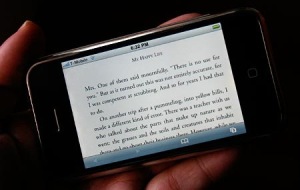 Mobile phones are now emerging as a viable distribution channel for publishers. In this respect, the international publishing community is far ahead of their US counterparts. According to a recent post on TechCrunch, in Japan, half of the top selling works of fiction in 2007 were composed for reading on cell phones (keitai shousetsu) rather than in print form. This is opening up new opportunities for authors and publishers to reach a wider audience without necessarily going through the often slow moving bookstore channel.
Mobile phones are now emerging as a viable distribution channel for publishers. In this respect, the international publishing community is far ahead of their US counterparts. According to a recent post on TechCrunch, in Japan, half of the top selling works of fiction in 2007 were composed for reading on cell phones (keitai shousetsu) rather than in print form. This is opening up new opportunities for authors and publishers to reach a wider audience without necessarily going through the often slow moving bookstore channel. 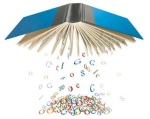 A third factor is a widening availability of a content in e-book format. The recent Google settlement with the book publishing industrypotentially opens the door to a wide range of works. Neill Denny, editor of The Bookseller, a trade publication based in London, wrote that the agreement has possibly created
A third factor is a widening availability of a content in e-book format. The recent Google settlement with the book publishing industrypotentially opens the door to a wide range of works. Neill Denny, editor of The Bookseller, a trade publication based in London, wrote that the agreement has possibly created The fourth factor is simply the fact that Millenials and the generations that follow them will expect to access books – like they now access other forms of entertainment – via their mobile devices.
The fourth factor is simply the fact that Millenials and the generations that follow them will expect to access books – like they now access other forms of entertainment – via their mobile devices. 




